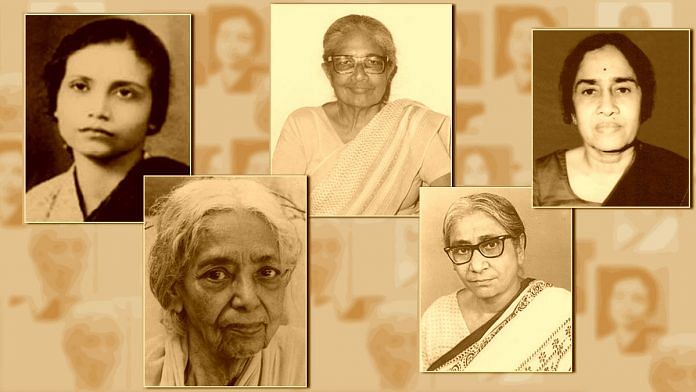New Delhi: Science today is increasingly recognising the contributions of women and making efforts to bring in more girls into the STEM field from an early age.
STEM is a curriculum based on the idea of educating students in four specific disciplines — science, technology, engineering and mathematics — in an interdisciplinary and applied approach.
On the occasion of International Day of Women and Girls in Science Tuesday, ThePrint brings you five lesser-known women in the filed of STEM who set examples for the next generation to follow.
Janaki Ammal — who made sugar sweeter
Ammal’s pioneering work in crossbreeding sugarcane back in the 1930s is said to have improved the understanding of the indigenous sugar varieties.
Through her research, Ammal created new, sweeter varieties of sugarcane.
Born in 1897 in Kerala, Ammal obtained her bachelor’s degree from Queen Mary’s college in Madras, now Chennai, and went on to become the first woman to obtain a PhD in botany in the US.
The Chromosome Atlas of Cultivated Plants, which she wrote jointly with C.D. Darlington in 1945, is still used as an important reference in the field of cell biology.
Also read: Two Indian journalists are bringing the women of science to life
Bibha Chowdhuri — who could have won a Nobel
Had it not been for World War II (1939-1945), which made it impossible for Bibha Chowdhuri’s team to get the necessary equipment for their work on detecting subatomic particles, Chowdhuri may have become the first woman to win the Nobel.
The photographic method of studying nuclear processes was described in three research papers published in the Nature journal between 1941 and 1942.
English physicist C.F. Powell won the Nobel prize in physics for the same method, which resulted in the discovery of the subatomic particle pion.
She obtained her PhD degree from the University of Manchester in 1949 on cosmic rays. She worked in the laboratory of Nobel Laureate P.M.S. Blackett in the university.
Unfortunately, Chowdhuri’s contributions to science received very little recognition during her lifetime. Recently, a star was named in her honour.
Kamala Sohonie — who called out C.V. Raman’s sexism
After being denied admission to pursue a masters degree in IISc by none other than C.V. Raman, Kamala Sohonie sat in a protest against the Nobel Laureate to let her study in the institution.
Raman allowed Sohonie to take admission to IISc under the condition that she does not mingle with and ‘distract’ the male students.
Sohonie’s grit to continue her course despite such sexism made it easier for women to pursue higher sciences in the institute, which until then did not have infrastructure to support female students.
After completing her MSc, Sohonie was invited to Cambridge University where she completed her PhD in just 14 months. She discovered an enzyme ‘Cytochrome C’ that plays a key role in the process of creating energy inside all living organisms.
Anna Mani laid groundwork for India’s solar power potential
Despite authoring five research papers on the optical properties of rubies and diamond, Anna Mani never received a PhD because of a technicality — she did not have a master’s degree.
Unfazed by this setback, she went on to pursue a career in meteorological instrumentation and worked her way up to become the deputy director general of the Indian Meteorology Department.
She worked on designing about 100 weather-related instruments — a programme that made India self-sufficient in meteorological measurements. She also set up a network of monitoring stations that helped identify India’s hotspots for harnessing solar power.
Asima Chatterjee developed drugs to fight epilepsy, malaria
Chatterjee’s work in Indian medicinal plants and organic chemistry helped her become the first woman to earn a PhD from an Indian university in 1944.
Born in 1917 in Calcutta (now Kolkata), she worked on understanding the chemistry of Indian plant products — leading her to develop anti-epileptic, anti-malaria and anti-cancer drugs.
In her career spanning 40 years, Chatterjee published over 400 research papers. She was the first woman scientist to be elected as the General President of the Indian Science Congress Association in 1975.
Also read: On International Day of Women and Girls in Science, remembering the 5 early pioneers




Annamani can be called the mother of renewable energy in india. After retiring from IMD she set up a project in Bengaluru in an industrial shed provided by the Raman Research Institute. Initially it was the Solar Mapping and later it was wind resource assessment. Later it was ably managed and developed by Dr. Rangarajan. This led to the birth of Centre for Wind Energy Technology which is now renamed as National Institute of Wind Energy. I had the opportunity to work under Dr. Rangarajan. The boom in the renewable energy can be without any doubt ascribed to these two towering personalities.